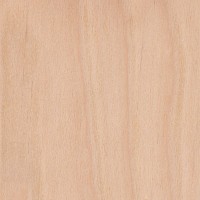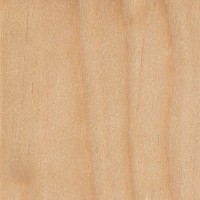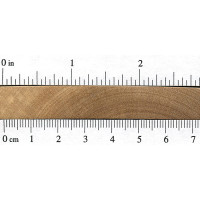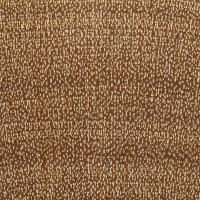 |
Common Name(s): Yellow Birch Scientific Name: Betula alleghaniensis Distribution: Northeastern North America Tree Size: 65-100 ft (20-30 m) tall, 2-3 ft (.6-1.0 m) trunk diameter Average Dried Weight: 43 lbs/ft3 (690 kg/m3) Specific Gravity (Basic, 12% MC): .55, .69 Janka Hardness: 1,260 lbf (5,610 N) Modulus of Rupture: 16,600 lbf/in2 (114.5 MPa) Elastic Modulus: 2,010,000 lbf/in2 (13.86 GPa) Crushing Strength: 8,170 lbf/in2 (56.3 MPa) Shrinkage: Radial: 7.3%, Tangential: 9.5%, Volumetric: 16.8%, T/R Ratio: 1.3 |
Color/Appearance: Heartwood tends to be a light reddish brown, with nearly white sapwood. Occasionally figured pieces are available with a wide, shallow curl similar to the curl found in Cherry. There is virtually no color distinction between annual growth rings, giving Birch a somewhat dull, uniform appearance.
Grain/Texture: Grain is generally straight or slightly wavy, with a fine, even texture. Low natural luster.
Endgrain: Diffuse-porous; primarily radial multiples; medium pores in no specific arrangement, moderately numerous to numerous; parenchyma marginal, and sometimes diffuse-in-aggregates (faintly visible with lens); narrow rays, spacing fairly close to close.
Rot Resistance: Birch is perishable, and will readily rot and decay if exposed to the elements. The wood is also susceptible to insect attack.
Workability: Generally easy to work with hand and machine tools, though boards with wild grain can cause grain tearout during machining operations. Turns, glues, and finishes well.
Odor: No characteristic odor.
Allergies/Toxicity: Birch in the Betula genus has been reported as a sensitizer. Usually most common reactions simply include skin and respiratory irritation. See the articles Wood Allergies and Toxicity and Wood Dust Safety for more information.
Pricing/Availability: Likely to be rather economical in most instances. Figured boards can be more expensive, but normally plain birch lumber is in the same price range as maple or oak.
Sustainability: This wood species is not listed in the CITES Appendices or on the IUCN Red List of Threatened Species.
Common Uses: Plywood, boxes, crates, turned objects, interior trim, and other small specialty wood items.
Comments: Birch is one of the most widely used woods for veneer and plywood worldwide. Besides regular sheets of plywood, Birch veneer is also used for doors, furniture, and paneling.








I think Yellow Birch has a VERY characteristic odor.
Yellow birch is harder and heavier than most birch. Its a true Northern species, I,ve seen it in Northern NY, and new England and southern Ontario and some grow larger than you would expect a birch to grow. The wood rivals tiger maple in appearance and it develops a golden fiddleback appearance with age, quite beautiful, Fine veneer of the stuff is as fine in my view as tiger maple. It has a shimmer to the grain and a slightly coarser grain than maple making the shimmer effect even more. Just lovely.
I’m a wood newbie and I’ve taken interest in identifying the wood used on all of the doors in our Tokyo apartment. As far as I can tell, the doors are veneered. I’ve tried using the database here and it appears to me that the wood may be some type of Birch. But this being Tokyo, the wood could be imported—or native to Japan. It’s my understanding that Birch is usually yellow-ish, but our doors definitely have a reddish tinge. Perhaps they are stained? I’ve attached an image.
Any insights most appreciated.??
It doesn’t look like birch. It looks like something I have no clue what it is.
Maybe Madrone? Madrone (aka Arbutus) has similar looking grain and often a slightly reddish tinge. It’s also most commonly used in veneer form, which I’m assuming those doors are veneered and not solid. Satinwood also has similar look to it but would be way more expensive. Meranti (or Lauan) is a pretty common doorskin veneer, but those doors look much nicer than any Meranti I’ve ever seen.
Could be gingko, which is an ornamental street and yard tree in America but a highly valued lumber tree in Japan. That said, it could also be a Scandinavian or Siberian birch, which Japan imports
Are you sure you haven’t mixed gingko up with paulownia? I’ve never heard of references to ginkgo being used for lumber, it seems to yield pretty low quality wood.
Gingko produces an orangey-pale yellow lumber that some wood workers pursue. I have seen gingko lumber get really good prices. I’m about to slab two big gingko logs myself for live edge benches. I agree it’s not a high quality lumber like you would use for cabinetry or flooring, but within a use range that fits its strengths, it is in demand. Do a search for gingko lumber. You will be surprised
The standard office door in the US is a veneer of yellow birch (ca. 1/16″) over a particle core. I can only guess how many of these doors have been installed in office buildings and schools around the nation. If I said 30 million, I’d be confident of reasonable accuracy. Standard door size is 3’0″ by 6’8″, which makes about 42 square feet of veneer. This marvelous tree has fallen in immense numbers, mainly in Quebec but in other places, to find its way into wood doors. But not one office worker in 100, 000 has any idea of the… Read more »
One of vendor told that BRICH wood does not catch fire as he is using this as platform for FRP stools.
It is correct it doesn’t catch fire
Since this is still wood, I’m going to go out on a limb and say that yes it will still catch fire.
Yeah I burn birch all the time lol. It is a standard firewood.
“Out on a limb” I see what you did there. ?
hi, is the birch wood is good for rocking chair? or not? thanks?
I like Birch. But there’s lots of things I like more. Like women. Football. Food. Partying. Etc. Etc. You get my drift.. lol.
Graham,
I’ve got some Baltic Birch myself, but the main issue that I’m having is simply determining what exact species of wood it is: baltic birch seems to be more of a vague term describing the region the birch came from, and not necessarily a specific species of birch.
Baltic Birch refers to a grade of plywood, not a species. See here: https://www.wood-database.com/baltic-birch/
Even that’s not entirely accurate.
“Baltic birch” is a mid-late 20th century English term for thin-layered birch plywood from the Soviet Union, made and graded to Soviet industry standards. Higher grades or stricter QC on export batches seems likely, since the product got far more love and respect among foreign users than within the USSR itself.
“Baltic” is likely a marketing invention to avoid calling it “Soviet birch ply”, which is what it actually was.
Dude, I am building a DN racing iceboat out of wood. The hull is mostly Sitka Spruce. The runner plank is quarter sawn ash on the top and bottom. The blades are a sandwich of carbon fiber, Baltic Birch, and 440C stainlss steel. If you would like to see pictures I can provide some. Or just Google “DN iceboat, hull, runner plank, runners, etc. Your database is very thorough, and we here at Erwin Enterprises have used it multiple times during construction. I noticed you do not have a scan of Baltic Birch. Would you like me to scan some… Read more »